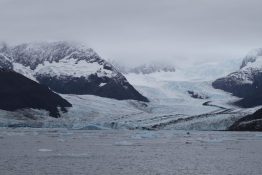All too often, we forget about a critical component of successful communication: being a good listener. Communication is, after all, a two-way street; being an effective communicator not only relies on being clear in what you say or do, but also in truly hearing and valuing people’s perspectives, needs, concerns and ideas, too. Listening allows us to empathize and relate to others, giving us a glimpse into their world and their day-to-day life.
Read more »A UW Environment expert included on Highly Cited Researchers 2021 list
UW Environment is proud to announce that School of Aquatic and Fishery Sciences’ Julian Olden has been named on the annual Highly Cited Researchers 2021 list from Clarivate. The annual list identifies researchers who demonstrated significant influence in their chosen field or fields through the publication of multiple highly cited papers during the last decade. Their names are drawn from the publications that rank in the top 1% by citations for field and publication year in the Web of Science citation index.
Read more at UW News »Deforestation, climate change linked to more worker deaths and unsafe conditions
Outdoor workers in the world’s lower-latitude tropical forests may face a greater risk of heat-related deaths and unsafe working conditions because of deforestation and climate warming, according to a study led by The Nature Conservancy, the University of Washington and Indonesia’s Mulawarman University. In the study, researchers found that increased temperatures of 0.95 C (1.7 F) in the deforested areas of Berau Regency, Indonesia, between 2002 and 2018 were linked to roughly 118 additional deaths in 2018, and 20 additional minutes of daily conditions too hot for humans to work in safely.
Read more at UW News »New method shows today’s warming ‘unprecedented’ over past 24,000 years
A new effort to reconstruct Earth’s climate since the last ice age, about 24,000 years ago, highlights the main drivers of climate change, and how far out of bounds human activity has pushed the climate system. The University of Arizona-led study uses a technique for reconstructing past temperatures developed by co-authors at the University of Washington. The study, published Nov. 10 in Nature, has three main findings: It verifies that the main drivers of climate change since the last ice age are rising greenhouse gas concentrations and the retreat of the ice sheets It suggests a general warming trend over the last 10,000 years — settling a decade-long debate in the paleoclimatology community about whether this period trended warmer or cooler The magnitude and rate of warming over the last 150 years far surpasses the magnitude and rate of changes at any other time over the last 24,000 years “Paleoclimate records provide the only record we have of these past climates, but these records are imperfect and they have gaps in space and time.
Read more at UW News »UW oceanographer will study how glacial particles remove CO2 from atmosphere
An oceanographer at the University of Washington is part of a new project to study how glacial particles, created as glaciers grind the rock beneath them into a powder, react with seawater to remove carbon dioxide from the atmosphere. Alex Gagnon, an associate professor of oceanography at the UW, is one of the investigators on a newly funded project that involves field and lab studies of a natural setting that could help us understand the ocean’s role in carbon removal, which many experts believe will need to be combined with emissions reductions to address climate change.
Read more at UW News »





